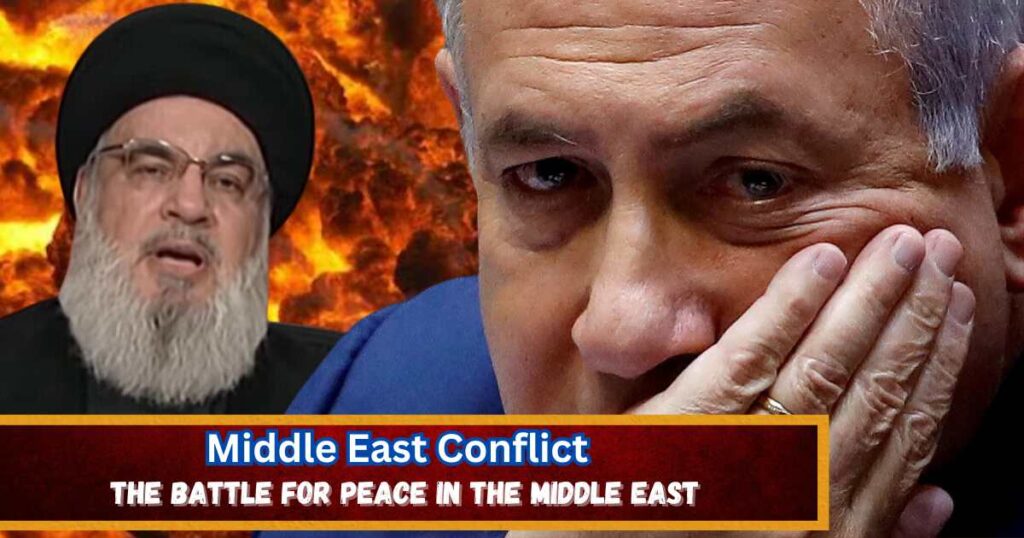Since October 7 last year, the conflict between Israel and Hamas has continued to escalate, causing significant regional and global implications. This analysis will delve into the current situation, Israel’s strategy, and the future of the Middle East. As we explore these aspects, we’ll consider how they resonate with American interests and values.
Initial Attack and Israel’s Response to the Middle East Conflict
On October 7, Hamas launched a surprise attack on Israel, resulting in numerous casualties and hostages. Israel’s immediate strategy was clear: the destruction of Hamas. To achieve this, Israel implemented a multi-faceted approach, starting with the blockade of the Gaza Strip, Hamas’ operational base. By blocking the area near the Mediterranean Sea, Israel aimed to cut off Hamas’ resources and support. Air strikes soon followed, targeting Hamas’s infrastructure and leading to an invasion.
However, after months of conflict, a former senior officer of the Israel Defense Forces expressed skepticism about the success of Israel’s approach. He argued that Hamas is not just an organization but an idea embedded in people’s minds, making it a battle of ideologies rather than mere military might.
Israel’s Strategic Missteps and Hezbollah’s Role in the Middle East Conflict
Israel’s initial focus was on dismantling Hamas’ logistical network in the Gaza Strip, including tunnels used for transportation and communication. The strategy also aimed to isolate Hamas leadership and rescue Israeli hostages. Yet, Israel’s plans faced significant challenges.
One major miscalculation in the Middle East conflict was underestimating Hezbollah, a militia group backed by Iran and operating from Lebanon. As Israel concentrated its efforts on Gaza, Hezbollah opened a northern front, leading to the displacement of 60,000 people from northern Israel. This diversion strained Israel’s resources and highlighted the complexity of the conflict.
Iran’s Influence and Wider Regional Dynamics in the Middle East Conflict
Iran’s longstanding antagonism towards Israel played a crucial role in the Middle East conflict. Israel’s strategy included cutting off Iran’s support to Hamas and widening the conflict to target Iranian-backed non-state actors in Syria and Lebanon. This approach faced setbacks, including retaliatory strikes from Iran, further complicating Israel’s efforts.
Israel’s inability to secure broad international support, including from key ally the United States, added to its challenges. With the U.S. focused on its upcoming elections, there was little appetite for escalating the conflict with Iran, leaving Israel to navigate the situation with limited external backing.
Arab Countries’ Stance and Geopolitical Shifts in the Middle East Conflict
The reaction of Arab countries, particularly Saudi Arabia and the UAE, significantly influenced the dynamics of the Middle East conflict. The U.S. had previously aimed to create a coalition of Sunni Arab states and Israel to counter Iran’s influence. This effort included diplomatic initiatives like the Abraham Accords and the India-Middle East Economic Corridor.
However, the Hamas attack on Israel disrupted these efforts. Sunni Arab countries, under pressure from their populations, criticized Israel’s actions in Gaza and suspended normalization efforts. This shift highlighted the delicate balance in the Middle East, where Sunni Arab countries must navigate their relationships with both Israel and their own populations.
Russia, China, and the Global Perspective on the Middle East Conflict
The role of Russia and China in the Middle East conflict adds another layer of complexity. Both countries have strategic interests in the Middle East and have supported Iran in various ways. The attack by Hamas, believed by some analysts to be influenced by Iran with possible backing from Russia and China, aimed to disrupt U.S. influence in the region.
This geopolitical maneuvering underscores the broader implications of the Israel-Hamas conflict. The Middle East remains a focal point for global power struggles, with significant ramifications for international relations and regional stability.
The Future of the Middle East Conflict
Looking ahead, the future of the Middle East conflict remains uncertain. As long as Hamas controls the Gaza Strip and receives support from Iran and Hezbollah, Israel will face ongoing security challenges. The lack of a two-state solution and continued tensions with Sunni Arab countries further complicate the prospects for peace.
The U.S. plays a crucial role in this scenario, both as an ally of Israel and a key player in the region. American interests in the Middle East, including security, economic partnerships, and geopolitical stability, are deeply intertwined with the outcome of this conflict. Engaging in diplomatic efforts and supporting viable solutions will be essential for shaping a peaceful and stable Middle East.
Join the Conversation on the Middle East Conflict
What do you think is the best approach for resolving the Israel-Hamas conflict? How should the U.S. navigate its role in the Middle East conflict? Share your thoughts in the comments below.

